First African American Woman to Lecture in Public
Maria Stewart was an essayist, lecturer, abolitionist and women’s rights activist. She was the earliest known American woman to lecture in public on political issues. Stewart is known for four powerful speeches she delivered in Boston in the early 1830s – a time when no woman, black or white, dared to address an audience from a public platform.
Childhood and Early Years
She was born free as Maria Miller in 1803 in Hartford, Connecticut. All that is known about her parents is their surname, Miller. At the age of five, she lost both her parents and was forced to become a servant in the household of a white clergyman. She lived with this family for ten years.
Although she received no formal education, Maria learned as much as possible by reading books from the family library. After leaving the family at the age of fifteen, she supported herself as a domestic servant while furthering her education at Sabbath schools. Specific details about her employment or where she lived at the time are unknown.
As a young woman she moved to Boston. On August 10, 1826, Maria Miller married James W. Stewart, a forty-four-year-old veteran of the War of 1812. After the war, he had earned a substantial living by fitting out whaling and fishing vessels. At the time, African Americans made up only three percent of Boston’s population, and the Stewarts were part of an even smaller minority: Boston’s black middle class.
In December 1829, James Stewart died; the marriage had produced no children. Although Maria Stewart was left with a substantial inheritance, she was defrauded of it by the white executors of her husband’s will after a drawn-out court battle. Once again, she was forced to turn to domestic service to support herself.
In 1830, partly due to grief over her husband’s death, Stewart underwent a religious conversion. A year later, she made a “public profession of my faith in Christ,” dedicating herself to God’s service. For Stewart, her newfound religious fervor went hand-in-hand with political activism: she resolved to become a “strong advocate for the cause of God and for the cause of freedom.”
Speaking and Writing Careers
Meanwhile, the abolitionist movement was beginning to gather strength in Boston. In 1831, William Lloyd Garrison, publisher of the abolitionist newspaper the Liberator, called for women of African descent to contribute to the paper. Maria Stewart responded by arriving at his office with a manuscript containing several essays which Garrison agreed to publish.
Stewart’s first publication, a twelve-page pamphlet entitled Religion and the Pure Principles of Morality (1831), called upon African Americans to organize against slavery in the South and to resist racist restrictions in the North. She also called for black economic progress and women’s rights. Other recurring themes included the value of education and the need for black unity and collective action.
She further advocated the establishment of strong, self-sufficient educational and economic institutions within African American communities. In particular, she called upon women to participate in all aspects of community life. “How long,” she asked, “shall the fair daughters of Africa be compelled to bury their minds and talents beneath a load of iron pots and kettles?”
Soon afterward, Stewart began to deliver public lectures. Her first speaking engagement was on April 28, 1832, before the African American Female Intelligence Society of Boston. Aware that she was violating the taboo against women speaking in public, Stewart asserted in her talk that “the frowns of the world shall never discourage me.”
While the main thrust of the speech was to urge African American women to turn to God, she also urged them to stand up for their rights, rather than silently suffer humiliation. “It is useless for us any longer to sit with our hands folded, reproaching the whites; for that will never elevate us,” she said.
Despite the fact that she had little formal education, Stewart continually showed her intelligence in her lectures, referencing the Bible, the U.S. Constitution and various literary works. When she was criticized for daring to speak in public, Stewart would claim that her authority came from God – that she was simply following God’s will.
On September 21, 1832, Stewart lectured to an audience of both men and women at Franklin Hall. In that speech, she asserted that free African Americans were hardly better off than those in slavery:
Look at many of the most worthy and most interesting of us doomed to spend our lives in gentlemen’s kitchens. Look at our young men, smart, active, and energetic, with souls filled with ambitious fire; if they look forward, alas! What are their prospects? They can be nothing but the humblest laborers, on account of their dark complexions; hence many of them lose their ambition, and become worthless…”
Meanwhile, Stewart continued to submit her writings for publication. In 1832, Garrison published another pamphlet, Meditations from the Pen of Mrs. Maria W. Stewart. Garrison also printed transcripts of all of Stewart’s speeches in the Liberator; however, in accordance with the editorial conventions of the day, her contributions were relegated to the paper’s “Ladies’ Department.”
Stewart’s third speech, delivered at the African Masonic Hall on February 27, 1833, was titled “African Rights and Liberty.” In this speech, she again defended her right to speak publicly, while castigating African American men.
You are abundantly capable, gentlemen, of making yourselves men of distinction; and this gross neglect, on your part, causes my blood to boil within me. Had the men amongst us, who have had an opportunity, turned their attention as assiduously to mental and moral improvement as they have to gambling and dancing, I might have remained quietly at home, and they stood contending in my place.
The response to Stewart’s speeches – even from those who supported her cause – was overwhelmingly negative; she was condemned for having the audacity to speak onstage. In the words of African American historian William C. Nell, writing about Stewart in the 1850s, she “encountered an opposition even from her Boston circle of friends, that would have dampened the ardor of most women.”
Stewart delivered her final Boston speech on September 21, 1833, announcing her decision to leave the city. In the speech, she acknowledged that, by lecturing publicly, she had “made myself contemptible in the eyes of many, that I might win some,” which she admitted was “like a labor in vain.”
Stewart’s speeches were direct protests against social conditions being experienced by African Americans at that time, and touched on several political issues. She was undoubtedly influenced by African American women preachers of the era, such as Jarena Lee, Julia Foote and Amanda Berry Smith. Stewart’s protest speeches were closer in their style than to those given later by Sojourner Truth.
Maria Stewart accomplished several firsts in her short public speaking career:
- First African American woman to lecture about women’s rights, and black women’s rights.
- First American woman to speak to a mixed audience of men and women, black and white.
- First known American woman to lecture in public on political issues.
- First African American woman to make public anti-slavery speeches.
Career in Education
Nevertheless, Stewart gave in to public pressure and stopped lecturing in 1833, then turning her attention to education. Contrary to the prejudices of her day, Stewart had long believed that all African Americans – both male and female – deserved the chance to acquire an education. In her speeches, Stewart had often referred to literacy as a sacred quest at a time when it was a crime to teach slaves to read or write.
In 1833, Stewart moved from Boston to New York City, where she taught in public schools in Manhattan and Long Island. She also continued her political activities, joining women’s organizations, including a black women’s literary society, and attending the Women’s Anti-slavery Convention of 1837. She also lectured occasionally, and published her collected works, Productions of Mrs. Maria W. Stewart (1835).
In 1835, two years after Stewart had left Boston, William Lloyd Garrison published a collection of her speeches plus some essays and poems, entitled Productions of Mrs. Maria W. Stewart. Within a year of its appearance, other women, both black and white, began to follow the path Stewart had opened, lecturing in churches and meeting halls across the country.
In 1852, Stewart moved to Baltimore, earning a small living as a teacher of paying pupils. “I have never been very shrewd in money matters; and being classed as a lady among my race all my life, and never exposed to any hardship, I did not know how to manage,” Stewart later wrote about this period.
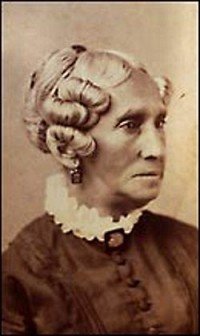 Later Years
Later Years
In 1861, she moved to Washington DC, where again she established a school for children of families that had escaped from slavery during the war. Her expanded 1879 edition of Productions includes an autobiographical sketch, “Sufferings During the War.”
By the early 1870s, Stewart had been appointed as head matron at the Freedman’s Hospital and Asylum in Washington. The facility, established by the Freedmen’s Bureau, had room for 300 patients and served not only as a hospital but also as a refugee camp for former slaves displaced by the Civil War. Stewart continued to teach, even as she lived and worked at the hospital.
In 1878, a law was passed granting pensions to widows of War of 1812 veterans. Stewart used the unexpected money to publish a second edition of Meditations from the Pen of Mrs. Maria W. Stewart. The book, which appeared on December 17, 1879, was introduced by supporting letters from Garrison and others.
Shortly after the book’s publication, Maria Stewart died at the Freedmen’s Hospital at age 76. Her obituary in The People’s Advocate, a Washington-area black newspaper, acknowledged that Stewart had struggled for years with little recognition: “Few, very few know of the remarkable career of this woman whose life has just drawn to a close.” She was buried in Graceland Cemetery in Washington, DC.
In 1987, Indiana University Press published a collected edition of her work, Maria W. Stewart, America’s First Black Woman Political Writer: Essays and Speeches. While Stewart was criticized and eventually silenced during her lifetime, and her work has been neglected since then, she is finally beginning to be recognized for what she was: a pioneering speaker and essayist.
Maria Stewart’s essays and speeches presented original ideas that were to become central to the struggles for African American freedom, human rights and women’s rights. In this she was a clear forerunner to Frederick Douglass, Sojourner Truth and generations of the most influential African American activists and political thinkers. Many of her ideas were so far ahead of their time that they remain relevant more than 180 years later.
SOURCES
About.com: Maria Stewart
Wikipedia: Maria W. Stewart
Answers.com: Maria W. Stewart
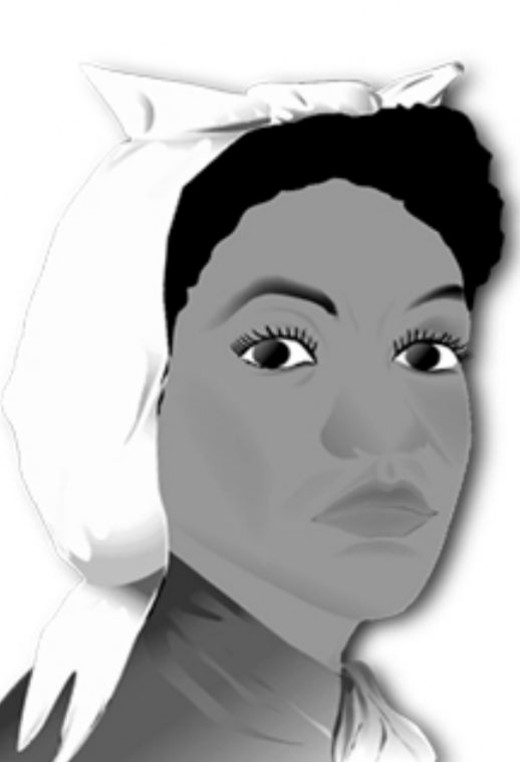
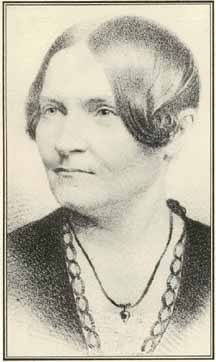
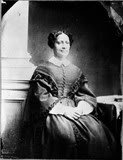
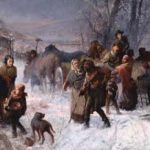
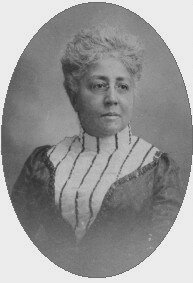
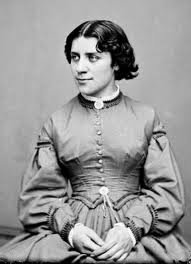

That photograph is not of Stewart, it is of Sarah Harris Fayerweather.